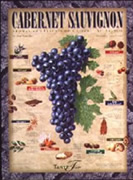This is a Restaurant Wine excerpt from Issues #152-154 (2013/2014).
What to Do in a Flat Market?
Here are Eight Wine Program Suggestions
In a flat market— provided that same-store traffic remains steady— there are many things that can be done to enhance them. Some of the most effective include:
1. Increased staff wine training (even when sommeliers are used)
In wine-oriented restaurants, wine training for servers should be done weekly, if not daily, during lineup, and should cover everything from service to product knowledge. The better informed the staff is about wine and its service, the more comfortable—and successful, in terms of sales—they will be with guests.
2. Better wine service
Better wine service of course involves reviewing and upgrading your service basics and logistics (presenting the wine list or iPad, pointing out wine selection highlights, answering guest questions, opening wine bottles tableside, etc.). But it also involves your staff’s ability to better read your customers. Your staff has to be regularly reminded and encouraged to listen carefully to guest wine questions, and to ask crucial follow-up questions so that guests receive wines they are pleased with. Questions like, “Would you like a wine you are familiar with or would you like to try something new?”
3. Fine tuning wine selections
This can mean many things, including trimming or expanding your selections (and inventory) and/or consciously seeking out more wines (as a percentage of total selections) that best suit your menu—both important considerations in an on-going wine program.
But here, we are suggesting that you expand your wine selections in categories that demonstrate season-to-season and year-to-year strength. These can be determined by doing regular detailed analyses of your wine sales by origin, color, varietal/type, price point, brand, sales format (glass, bottle, ½ bottle), etc., and compare sales week by week, and month by month, for the past 12 to 24 months. Those wines or categories that have sold well should be expanded; and those that have not should be shrunk—and possibly eliminated, unless of course they fall into the ‘window dressing’ category and do not account for much of the cost of your wine inventory.
This is an excerpt from Restaurant Wine, Issues #152-154 (2013/2014).
Annual PDF subscriptions are $109 per year. Visit our subscription page to place your order today. Also, browse our complete back issue collection by topic to buy individual back issues for particular inspiration.
Restaurant Wine is published by Ronn Wiegand, one of four people in the world to hold the titles of Master of Wine and Master Sommelier.




